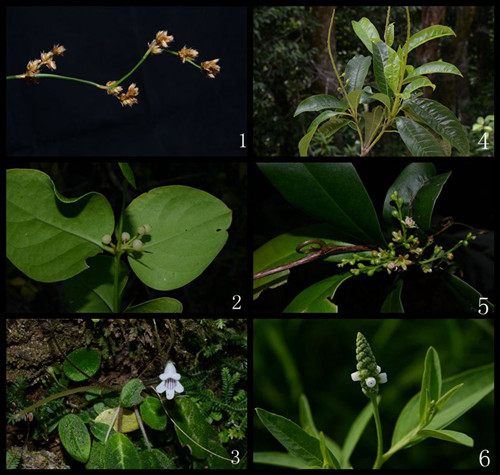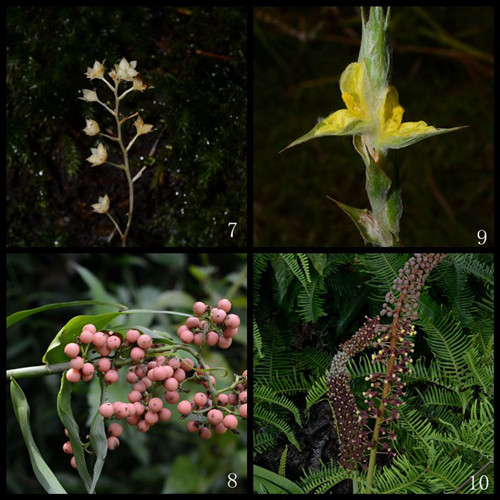From April to August 2014, Mr. ZHANG Ting, LIU Cheng and YA Jidong, three collectors from the Germplasm Bank of Wild Species, Kunming Institute of Botany, Chinese Academy of Sciences (KIB), went to Hainan Island three times to collect living plant materials, as a strong support to KIB’s iFlora program.
Hainan Island is the second largest island in China, located at the north edge of tropical Asia. This young island is suggested to be connected to the mainland China before the Quaternary Period until the emergence of the Qiongzhou Strait during early Pleistocene; thereafter, it was once connected to the mainland again due to the drop of the sea level. Hainan Island has therefore the transitional characteristics of tropical and subtropical natural conditions, and its flora is composed mainly of tropic elements and closely related to Indochina Peninsula. According to a survey of this island, there are 1,110 flowering plant species endemic to China, including 505 species endemic to Hainan Island belonging to 267 genera, 79 families
Some of the targeted species are narrowly geographically distributed, specimens of which are too obsolete to be used properly, and lack of collecting information. It was a great challenge for the collectors to obtain new collections. In addition, the collectors had to overcome continuous high temperature weather and insects haunting in mid-summer. However, with 28 days hard working from the seaside (coastal mangrove, sand beach, wet land, farmland) to the high mountains (Bawangling, Jianfengling, Diaoluoshan, Wuzhishan) they have accomplished their collecting mission successfully, and have made 212 collections of living plant materials from 185 Species belonging to 175 genera, 100 families, including some taxa only distributed in Hainan, such as Ancistrocladaceae, Nepenthaceae, Salvadoracea, Restionacea (Hainan and Guangxi) and Hainan endemic genera Metapetrocosmea, Chunia; and some important groups for classification system studies, for example, Dichapetalaceae, Escalloniaceae, Flagellariaceae, Gisekiaceae, Ixonanthaceae, Ochnaceae, Opiliaceae, Philydraceae, Petrosaviaceae, Pandaceae, Sphenocleaceae, Xyridaceae, Stemonuraceae and Rinorea, Drypetes, Bacopa, Hedyosmum, Ximenia, Lumnitzera, Bruguiera.
Notably, the collectors found that habitats of a lot of species had disappeared with the rapid development of social economy, extensive use of herbicides in agricultural lands and natural disasters. Many of the original herbarium specimen collection areas have been converted into human dominated areas, especially some herbaceous species, such as Hydrocera triflora, Centrolepis banksii, which used to be abundant in farmland ecosystems are now very difficult to be found again so it is urgent to take actions to protect these fragile species that are sensitive to habitats.

1 Dapsilanthus disjunctus 2 Azima sarmentosa
3 Metapetrocosmea peltata 4 Polyosma cambodiana
5 Ancistrocladus tectorius 6 Sphenoclea zeylanica

7 Petrosavia sakurai 8 Flagellaria indica
9 Philydrum lanuginosum 10. Nepenthes mirabilis




